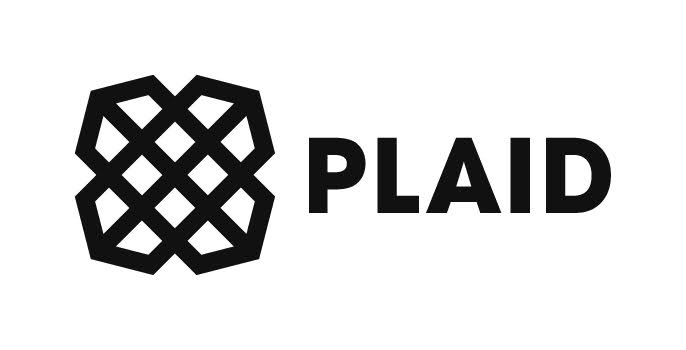We should start by saying the use of cash flow data in lending is not new.
Perhaps the two most obvious questions to ask when considering whether or not to loan someone money are, “How much money do you have today?” and “How much money will you have in two weeks?”
Lenders have been asking prospective customers how much money they make forever.
In fact, it’s only over the last three decades or so, when general-purpose credit scores and automated credit decisioning systems came into vogue, that lenders deprioritized ability to pay data (i.e., cash flow data) in favor of willingness to pay data (i.e., traditional credit bureau data), and that was a decision motivated more by cost and convenience than accuracy.
(For a much deeper dive into this point, I’d recommend checking out the newest Fintech Takes Research Report — How Cash Flow Data Can Defuse the Credit Score Time Bomb.)
However, with the emergence of consumer-permissioned data sharing, enabled through open banking APIs (like those offered by Plaid), cash flow data has come back into fashion in consumer lending.
I speak with lending executives from a variety of companies — including banks, credit unions, fintech companies, and embedded finance brands — on a weekly basis. Nearly all of them tell me that they are either exploring the use of consumer-permissioned bank transaction data or they are already actively using it in production.
Consumer-permissioned cash flow data in lending has become mainstream.
I want to emphasize just how big a deal this is.
Innovators in fintech have been working to advance the industry to this point for over a decade. And it’s been quite an evolution over that time period.
In the early days, the questions we were trying to answer using consumer-permissioned bank transaction data were quite simplistic: How much money do you have in your bank account?
Fast forward to today, and the questions we can now answer using consumer-permissioned bank transaction data are much more sophisticated and granular: How often does money come into your bank account? What sources does it come from? How stable are those patterns? How much money goes out of your bank account? What are those withdrawals and payments for? How often do they happen? How stable are those patterns?
What we can do today with consumer-permissioned bank transaction data is mind-boggling. However, what most lenders are doing with this data today is rather simplistic.
Now, to be clear, that shouldn’t be taken as a criticism. Picking the lowest-hanging fruit off a tree is simple and unexciting, but it’s also smart. It’s good business.
That’s what’s happening right now in the world of cash flow lending. The mass market is beginning to pick the low-hanging fruit.
Again, to be clear, that’s good! I’m glad that’s happening. It represents a significant step forward for the industry.
However, I think it’s worth asking, “What’s next?”
In this article, I want to look a little further up in the tree. I want to figure out what is holding us back from climbing higher. And I want to explore the lending use cases for cash flow data that might become mainstream five years from now.
But to do that, we first need to understand what makes a particular cash flow lending use case a strong and obvious business case for a lender to invest in.
What Makes For the Best Business Cases?
The cash flow lending use cases that make for the best business cases (i.e., the ones with an immediate and high ROI) are the ones that qualify as answers to the following three questions:
- What use case for cash flow data provides the biggest lift?
- What use case for cash flow data costs the least to implement?
- What use case for cash flow data introduces the least friction for consumers?
That’s it. That’s the formula.
Biggest Lift + Lowest Cost + Least Friction
That’s where you find your low-hanging fruit.
Let’s break those down in a little bit more detail.
Lift refers to the increase in performance that a new tool, technology, technique, process, or data source can provide to a lender, above and beyond what their existing stack already delivers.
In the context of cash flow data, the biggest lift comes when you utilize this data to underwrite consumers with damaged, thin, or missing traditional credit files. These are consumers who would otherwise be declined for credit due to poor or insufficient credit data.
Cost seems like an obvious one, but it actually has some layers to it.
The data itself costs money to access. However, there can also be extensive integration costs (many legacy credit decisioning and loan origination systems lack the ability, out of the box, to acquire and process consumer-permissioned bank transaction data), analytic development costs (building custom attributes and scoring models is expensive), and regulatory compliance costs (anytime you ask lawyers to sign off on a new approach to lending money, it generates a lot of billable hours).
As such, the low-hanging fruit in cash flow data, in terms of cost, is to utilize off-the-shelf attributes and scores and to rely on vendors that have already done a significant amount of the technical integration and regulatory compliance work. It is also why certain large banks and credit unions are choosing to start their experiments with cash flow underwriting by utilizing first-party data (i.e., the data they already have on their existing deposit customers), before acquiring third-party data through open banking APIs.
Finally, friction is something that every lender obsesses over, particularly in digital channels, where the slightest bump or delay can knock a prospective customer out of the funnel. Today, the process of acquiring a consumer’s permission to pull their bank transaction data introduces additional friction into the digital account opening experience, particularly in contrast to the check-the-box experience of permissioning access to traditional credit bureau data.
This is why you often see lenders start by integrating cash flow data at the end of the underwriting process, as an optional “second look” for applicants who would otherwise be denied for the loan. The additional friction is irrelevant in this use case because the lender is about to lose the consumer anyway.
These are the constraints that define where the mainstream uses of cash flow data in lending are today.
However, the keyword in that sentence is today.
Constraints change as time passes. Technology improves. Regulations (and regulators’ attitudes and expectations) evolve. Consumers become accustomed to new experiences and develop new expectations.
What Will Change
So, what’s going to change over the next five years?
Well, first, I believe that the digital account opening experience will be reconfigured around consumer-permissioned data. We will move from second-look underwriting, where the permissioning step is tacked on at the very end, to a world in which most consumer lending applications start by asking the borrower to link their primary financial account(s) as part of the application process.
The permissioning experience itself will become a lot faster and more seamless (you could argue this is already happening now; if you’ve ever linked an account using your bank’s mobile app + biometrics on your phone, you know what I’m talking about). And lenders will get more sophisticated about leveraging bank transaction data for multiple purposes across credit (application pre-fill, fraud detection, account verification and funding, etc.), giving them a much greater incentive to make consumer-permissioning a centerpiece of their digital lending strategies.
Second, the costs in this space are going to come down. We are already seeing a robust ecosystem develop around cash flow data in lending, with distribution partnerships and pre-built integrations lowering the barriers to entry for lenders of all sizes. Additionally, as the use of cash flow data in lending becomes normalized, compliance costs will decrease, as regulators become accustomed to common implementation and risk-management frameworks.
And finally, while cash flow data can be used to evaluate individuals with damaged, thin, or missing traditional credit files, I believe that we will see a significant shift over the next five years to lenders using cash flow data to better evaluate full-file prime and super-prime consumers.
We know, from extensive research, that bank transaction data is highly orthogonal to traditional credit data, which is to say that it’s not redundant. The two data sets reveal fundamentally different insights into consumers’ finances, making their combination an incredibly powerful analytical tool.
That tool — which will be increasingly expressed in the form of more robust attributes and scoring models — will be used to identify consumers whose prime or super-prime traditional credit scores are disguising important cash flow challenges. It will also be used to identify prime and super-prime consumers whose excellent cash flow management habits should earn them even better pricing.
What’s Next?
To return to our low-hanging fruit metaphor, we can think of the elimination of these constraints as the equivalent of a taller ladder; use cases that previously felt out of reach will suddenly be front and center.
What opportunities will lenders find, higher up in the tree?
I have three predictions:
- New Products. Today, most of the use of cash flow data is focused on unsecured and relatively straightforward consumer lending products, such as unsecured installment loans, pay-in-4 BNPL, and other small-dollar loans and credit builder products. However, there is every reason to expect cash flow data to infiltrate more complex consumer lending products. In fact, the more complex they are, the more value cash flow data delivered via APIs can provide. Mortgages are a great example. Mortgage lenders are legally required to collect a lot of information on consumers’ financial situations, including their current income and income history. Traditionally, that information was supplied by consumers as a raft of paper documents and/or PDFs (W-2s, pay stubs, bank statements, etc.), which were a hassle for both consumers and underwriters to deal with. Innovative mortgage lenders such as Sage Home Loans are already leveraging open banking to replace documents with data, and I expect that we will soon see more lenders leverage bank transaction data for income verification, as well as for full credit decisioning for prime mortgage borrowers.
- New Phases of the Customer Lifecycle. Underwriting is the obvious place to start. That’s where most new investments in lending go first, and in the case of cash flow data, that’s where there is a lot of low-hanging fruit (e.g., thin-file consumers). However, we are already starting to see cash flow data migrate to other phases of the customer lifecycle, including marketing and customer acquisition (e.g., MoneyLion’s Marketplace). Loan servicing (basically everything a lender does after originating and booking the loan) is an area I am particularly keen to see cash flow data reshape. Today, the process is largely driven by batch-based decisioning processes and stale credit bureau data, which severely limits the lenders’ ability to proactively work with individual customers to manage through financial disruptions and hardships. Consumer-permissioned cash flow data (powering real-time decisioning and customer engagement tools) will be a game-changer in this area.
- Completely New Ideas. We should also remain open to the possibility that the proliferation of consumer-permissioned cash flow data will revolutionize the lending ecosystem in ways that none of us can predict today. That’s what is so cool about building better infrastructure. Clever folks will leverage it in ways that even the sharpest industry observers cannot imagine.
The most exciting thing about this future is that it will be here before we know it.
A five-year window might seem long to startup founders, but trust me; compared to the slow evolution of the traditional credit data and scoring ecosystem (which happened over the last half century), the cash flow lending revolution is moving quickly.
The question is which lenders will put themselves in the best position to benefit from these changes?



